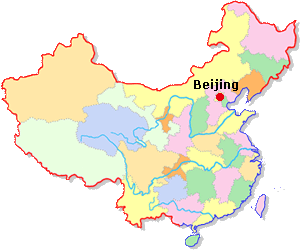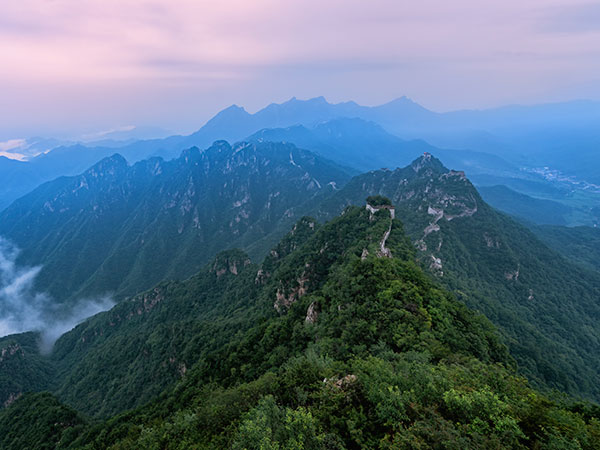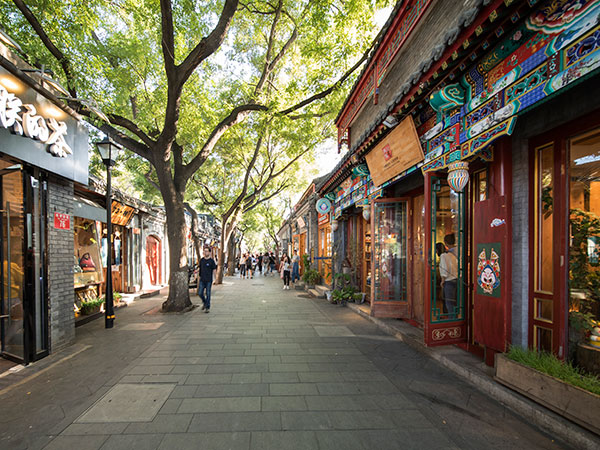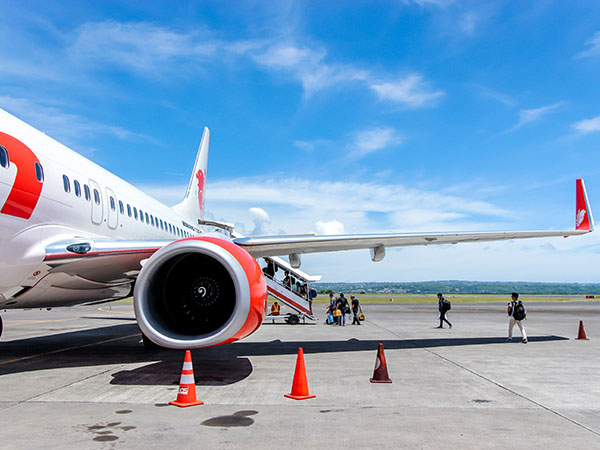 Ask a Question
Ask a Question
Beijing, the capital of the People's Republic of China, it is not only the nation's political center, but also a cultural, scientific and educational heart as well as a key transportation hub. Beijing has served as a capital of the country for more than 800 years. The city has many places of historic interest and scenic beauty, including the Forbidden City - the largest and best-preserved ancient architectural complex in the world; the Temple of Heaven - where Ming and Qing emperors performed solemn rituals for bountiful harvests; the Summer Palace - the emperors' magnificent garden retreat; the Ming Tombs - the stately and majestic mausoleums of 13 Ming Dynasty emperors; and the world-renowned and genuinely inspiring Badaling section of the Great Wall. Large-scale construction has brought great changes to Beijing since the foundation of the People's Republic of China in 1949 that adds more and more new attractions to the mysterious old city. The city also has a character all its own; there are quadrangles, Hutongs, tricycle, boiled mutton, arts and crafts, roasted duck and Peking Opera.
Basis Information
• Chinese Name: 北京
• Location: North of China
• Dialing code: (+86) 010
• Zip code: 100000
• Beijing Gov website: http://www.ebeijing.gov.cn/
• Main attractions in Beijing: Tiananmen Square, Forbidden City, Temple of Heaven, Summer Palace, Badaling/Mutianyu Great Wall, Ming Tombs, etc.
Administration Distribution
Beijing is located on the western coast of China on the Pacific Ocean and stands at the northern tip of the North China Plain. The city is 39% flat land and the other 61% is quite mountainous area. Beijing is surrounded by the Yanshan Mountains on the west, north and east while the small alluvial plain of the Yongding River lies to its southeast. Beijing faces the Bohai Sea, and the area is also called the Beijing Bay.
Beijing is divided into 14 administrative districts and 2 counties, including Dongcheng District, Xicheng District, Chaoyang District, Haidian District, Chaoyang District, Fengtai District, Shijingshan District, Tongzhou District, Shunyi District, Changping District, Daxing District, Mentougou District, Fangshan District, Pinggu District, Huairou District, Miyun County and Yangqing County. City center districts include, Dongcheng, Xicheng, Xuanwu, Chaoyang, Haidian, Fengtai and other districts. The Second Ring Road traces the old city walls and the Sixth Ring Road connects satellite towns in the surrounding suburbs. With the expansion of the city, Chaoyang, Haidian, Fengtai and Shijingshan Districts are also considered as the city area.
Two districts, Xicheng and Dongcheng District, Beijing are located within the Second Ring Road and are the traditional inner-city and the busiest places in the city. Xicheng means West City and Dongcheng means East City. Xicheng District is the center of the bustling area. Forbidden City, Tiananmen Square, the Bell Tower, the Temple of Heaven and other famous attractions in the central axis of the city are located in the Dongcheng District. Xicheng District homes the heads of the party and the state authorities, as well as offices of financial, business and other economic events.
Haidian District is located northwest of downtown. This district is home to many historic attractions and beautiful royal garden scenery. There are more than one hundred private gardens in this district, including the famous Old Summer Palace, Summer Palace, Fragrant Hills Park-a Holy Land to enjoy red leaves in fall. It is also the scientific and cultural education center of the city. Famous universities like Peking University, Tsinghua University, Renmin University of China and other institutions of higher education are sited in this area.
Tourist resource is also quite rich in the two counties. Yanqing County is the northwest gate of the capital. The world-famous Badaling Great Wall is sited in this county. Huairou County is home to famous attractions like Hongluo Temple, Mutianyu Great Wall, etc.
History
The earliest remnants of human habitation in the Beijing municipality are found in the caves of Dragon Bone Hill near the village of Zhoukoudian in Fangshan District, where the Peking Man lived.
Beijing's history dates back several thousand years but it first became notable in Chinese history after it was made the capital of the State of Yan under the name Yanjing. Yan was one of the major kingdoms of the Warring States Period, some 2,000 years ago. After the fall of Yan, during the later Han (206BC-220), Jin (265-420) dynasties and Tang dynasties (618-907), the Beijing-area was a major prefecture of northern China. Han, and
In 936, the Later Jin Dynasty (936-947) of northern China ceded a large part of its northern frontier, including modern Beijing, to the Khitan Liao Dynasty. In 938, the Liao Dynasty set up a secondary capital in what is now Beijing, and called it Nanjing (the "Southern Capital"). In preparation for the conquest of all of China, Yuan (Mongol) Dynasty founder Kublai Khan made this his capital as Dadu
After the fall of the Yuan Dynasty in 1368, the city was later rebuilt by the Ming Dynasty and Shuntian (順天) prefecture was established in the area around the city. In 1403, the third Ming Emperor Yongle moved the Ming capital south to Nanjing (Nanking) from the renamed Beiping (北平). During the Ming Dynasty, Beijing took its current shape.
For 40 days in 1644, Li Zicheng led a peasant uprising against the Ming regime. Following the end of Li's control of the city, the Manchus captured Beijing. After the Manchus overthrew the Ming Dynasty and established the Qing Dynasty in its place, Beijing remained China's capital throughout the Qing period. The Qing dynasty was overthrown in the Xinhai Revolution of 1911 but the capital of the newly founded Republic of China remained in Beijing as former Qing general Yuan Shikai took control of the new government from revolutionaries in the south. Yuan and successors from his Beiyang Army ruled the Republic from Beijing until 1928…..
If you would like to know more about history of Beijing, please visit Beijing History
Climate
The climate in Beijing is of the continental type, with cold and dry winters, due to the Siberian air masses that move southward across the Mongolian Plateau. Summers are hot owing to warm and humid with monsoon winds from the southeast bringing Beijing most of its annual precipitation. It has long spring and autumn. January is the coldest month and July is the warmest. Winter usually begins towards the end of October. The summer months, June to August, are wet and hot with about 80% of the annual precipitation.
• Best Time to Visit
Spring and autumn is the best time to visit Beijing, especially in April, May, September and Octover.
♦ Spring (March to May): Spring has comfortable temperature. And it is flower season and is the perfect time for outdoor activities. But it is a little dry and windy in spring in Beijing, with sometimes sand storm in April.
♦ Autumn (September to October) is perfect time to travel to Beijing. Although autumn is quite short in the city, it has comfortable temperature with less rain and wind than other season. Travelers can appreciate red leaves yellow gingko leaves in Fragrant Hill and Diaoyutai, where is the perfect time for photographers.
♦ Winter (November to next February): winter in Beijing is very cold. If you are lucky enough, you can see the beautiful view covered with white snow. Skiing, snowball fight or other activities are available. Generally, winter is regarded as the tourist off season in Beijing. You can get discounted hotel rate and tour price while traveling during the time period, except for Spring Festival. Tour price during Spring Festival is high, but there are abundant temple fairs. It is the best time to experience festival atmosphere.
• Dressing Tips
♦ Spring (March to May): temperature is moderate, but it is windy with sand. A thin coat is enough. A mask is necessary in case that there is sand storm.
♦ Summer (June -August): temperature in summer is usually above 30 degrees, with strong sunshine. Sun protection is necessary, such sunglasses, hats, umbrellas, etc.
♦ Autumn (September to October): autumn is windy. Temperature difference is a little large. So a thick coat is necessary, as well as face mask
♦ Winter (November to February): the lowest temperature in winter can be between 5-10 degrees below zero. So coats are a must. Girls should put long boots on. In addition, winter is very dry in the north of China, lipstick & lotions should be prepared.
Tourism
As one of seven ancient capitals in China, Beijing has a lot of historic heritage sites everywhere. There are has six world heritage sites in Beijing, being the top one city in the world that has the most number of world heritage in the world. Landscape in Beijing covers a wide range, including historic interest sites, cultural experience, natural view, art, etc.. Almost every district/county has highlight attractions. Area within the Third Ring Road in Beijing belongs to the Old City, where contains most of cultural and historic landscape.
Beijing is rich in tourism resources, with more than 200 tourist attractions opening up to tourists, including Forbidden City - the largest royal palace in the world, Temple of Heaven, Beihai Royal Garden, the Royal Summer Palace Garden, as well as Badaling Great Wall, Mutianyu Great Wall, Prince Gong's Mansion - the world's largest courtyard, and other famous attractions.
Cultural life in Beijing is quite rich. There are various types of performances and international exhibitions. Local characteristics folk customs in quite interesting too, Beijing snacks, Peking Opera, cross talk, stage performance, lively rap song, cloisonne, ivory caving, acquer carving, etc. Peking Opera is known as China's "national essence" with a history of more than two hundred years. Gorgeous costumes, beautiful singing tones and amazing mask & make-up make Peking Opera impressive to visitors from all over the world. The famous Chinese National Grand Theater, Chang'an Grand Theater, Huguang Theater, Lao She Teahouse, China Beijing Opera Theater, Mei Lanfang Grand Theatre and Poly Grand Theatre often offers the traditional Peking Opera performances. Houhai, Sanlitun Bar Street, Nanluoguxiang is a good place to go for enjoying your nightlife.
• Best Places to Visit
Forbidden City- also known as the Palace Museum, was home to the Imperial Court during the Ming and Qing Dynasties. As the world's largest and most complete existing ancient wooden structure buildings, it is an ancient architecture masterpiece. It should be on the top of your Beijing itinerary list. It is suggested to spend two to three hours to enjoy the majestic building here.
♦ Great Wall - there are different sections of Great Wall for visitors to explore, including Badaling Great Wall, Mutian Great Wall, Juyongguan Great Wall, Jinshanling Great Wall, Gubeikou Great Wall, Jiankou Great Wall, etc. Badaling and Mutian are two most poplar sections to tourists.

♦ Temple of Heaven – the symbol of Beijing, and is surrounded by a lively park typically packed with hordes of local people (especially the elder) drinking tea, flying a kite, practicing calligraphy or tai-chi or just watching the world go by. It is the best place to look into local people’s life in spare time.
♦ Tiananmen Square – the world's largest public square and a must see for all visitors from elsewhere in China and from foreign countries. The square is surrounded by grand buildings including the Museum of Chinese History, the Great Hall of the People, the Museum of the Chinese Revolution, the Qianmen Gate and most important, the Forbidden City. You can have a short stop-by to take pictures before you explore your Forbidden City in the day.
♦ Summer Palace – located in Haidian District, Northwest of Beijing, 15 kilometers away from Beijing City. It is one of the largest and best preserved existing imperial gardens in China and one of world-renowned tourist destinations. Kunming Lake, Longevity Hill and the Long Corridor are highlight sites to see in the palace garden. water Kunming Lake is clear with wide landscapre; you can see vast and classic gallery of frescoes in Long Corridor.
♦ Hutong – Hutong is a kind of old buling style in Beijing. But now, there are still a lot of local Beijingers living in Hutong. Hutong buildings are gray. By strolling along Hutong area, you can feel classic exotic environment.

Shopping
You can find a lot of places to shop and various items to buy as souvenirs. There are hundreds of old shops with a long history of hundreds of years. The main shopping districts include Wangfujing Commercial Circle, Xidan Commercial Area, Qianmen Street, Dashanlan Street, etc.
Beijing handicrafts epitomized the essence of the process of the Chinese handiwork. Classic Beijing crafts includes Cloisonne, jade, lacquer, inner-painted pots; other fold crafts includes Dough Figurine, palace lanterns, kites, paper cutting and other items, calligraphy, traditional Chinese painting, sculpture and seal carving. etc. They are perfect items as souvenirs or gifts.
Transportation
Beijing is one of the transport hubs in China regarding to road, railway and air. It offers very convenient transport for travelers to arrive and leave. The most common way to reach Beijing is by rail or by air.
 Airport
Airport
There are two airports in Beijing. One is Beijing Capital Airport (main airport in Beijing), the other is Nanyuan Airport (semi-military airport).
Beijing Capital Airport
♦ Address: Shunyi District
♦ Tel: 010-96158
♦ Official website: www.bcia.com.cn
It is located in Shunyi District, northeaster urban Beijing, about 30 kilometers away from the city center. It has the most arrival or departure international & domestic flights in mainland of China. Most flights are taking off and landing at Beijing Capital International Airport instead of Nanyuan Airport. There are three terminals in this airport, and the distance between each terminal is a little far. So before you arrive and depart the airport, passengers have to confirm in which terminal you will board or get off flights, in case of missing your flights. In order to facilitate passenger to transfer flights between different terminals, there is free shuttle bus between T1, T2, T3 terminals.

Nanyuan Airport
♦ Address: Feitai District
♦ Tel: 010-67978899
Nanyuan Airport is 13 kilometers away from Tiananmen Square. It is now owned and managed by the army, and is principal base China United Airlines Limited (civilian).
 Rail
Rail
There are four passenger railway stations for in Beijing right now: Beijing Railway Station, Beijing West Railway Station, Beijing South Railway Station, Beijing North Railway Station.
Beijing Railway Station
Located in downtown, only 2.5 kilometer from Tiananmen Square. It has trains leaving for many cities in China.
♦ Address: 31 Hutong Jia, Maojiawan, Dongcheng District, Beijing
♦ Tel: 010-51019999
♦ How to get: take Metro Line 2 and get off at Beijing Railway Station
Beijing West Railway Station
Trains from this station leaves for cities in southeast, southwest, northwest.
♦ Address: 118 Lianhuachi Dong Road, Feitai District, Beijing
♦ Tel: 010-63216253
♦ How to get: take Metro Line 9 to get off at Beijing West Railway Station
Beijing South Railway Station
Beijing South Railway Station is the most modern train station in the city. it is mostly used for departure and arrival of Beijing-Tianjin inter-city Railway and Beijing-Shanghai high-speed rail.
♦ Address: Yonganmen Wai Street, Feita District
♦ Tel: 010-51836272
♦ How to get: take Metro Line 4 and get off at Beijing South Railway Station
Beijing North Railway Station
It is sited in Xizhimen Commercial Area in downtown and was designed by Zhan Tianyou. Trains from the station take passengers to Badaling Great Wall, Kangxi Glassland, etc. There are more than 10 trains leaving for Badaling from here, taking one-hour for single journey.
♦ Address: Xizhimen North Street, Xicheng District
♦ Tel: 010-51866223
♦ How to get: take Metro Line 2 or 4, get off at Xizhimen Station
 Bus
Bus
There are a couple of long-distance bus stations in Beijing, including Bawangfen Long-distance Bus Terminal, Lliuliqiao Long-distance Bus Terminal, Dongzhimen Long-distance Bus Terminal, Sihui Long-distance Bus Terminal, Yongdingmen Long-distance Bus Terminal, Deshengmen Long-distance Bus Terminal, etc. You may choose the nearest one to start your journey.